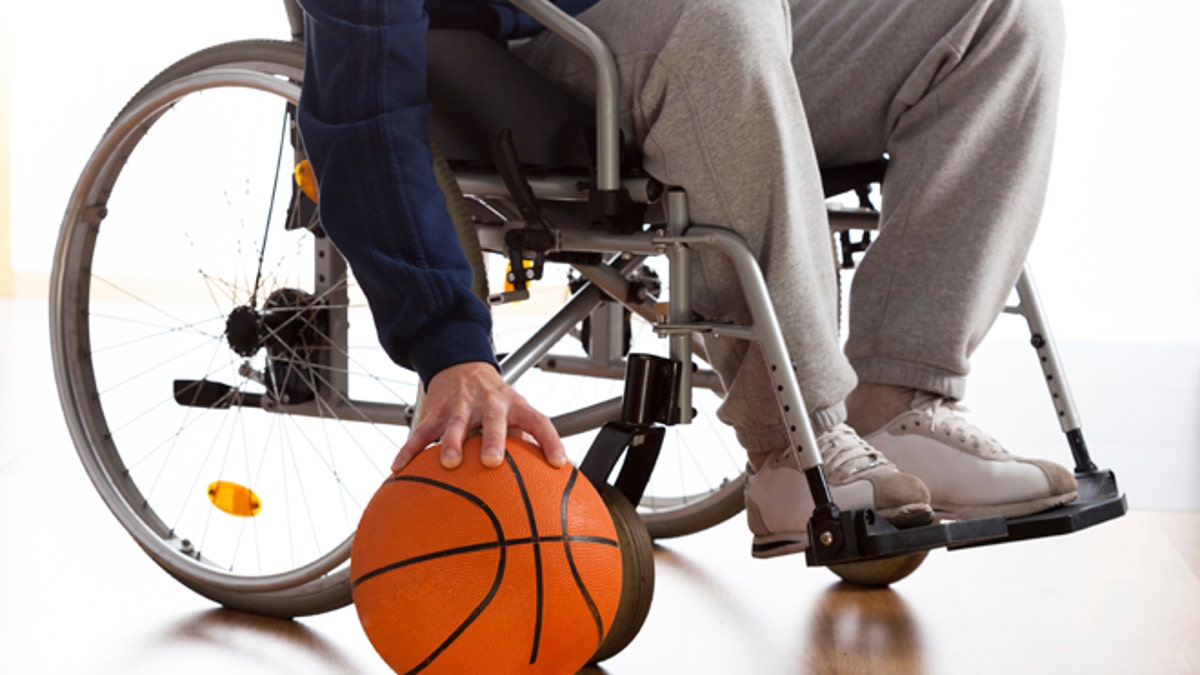
While some fitness centers may be accessible enough for wheelchairs to get through the door, most lack all of the accommodations necessary for people with limited mobility to use the gym, a small Mississippi study suggests.
All 10 gyms the researchers examined in Hattiesburg, Mississippi had elevators, and most had accessible parking and ramps, accommodations recommended by the Americans with Disabilities Act (ADA). But none had equipment designed for use by people in wheelchairs or staff trained to help these individuals work out.
"A prime example is that for a wheelchair user to maneuver a wheelchair to and around exercise equipment there needs to be 36 inches of space on all sides, however, for every facility surveyed, exercise equipment was closer together," study co-author Dr. David Dolbow, a researcher in kinesiology at the University of Southern Mississippi, said by email.
U.S. guidelines for adults with disabilities recommend at least 150 minutes a week of moderate-intensity activity or at least 75 minutes of vigorous activity, the study authors note in the journal Spinal Cord. But only about one-third of people with disabilities participate in leisure-time physical activity.
With gyms, "the question is do wheelchair users not attend because there is no access or does the facility not space equipment further apart because no wheelchair users attend," Dolbow said.
Dolbow and his co-author, an exercise physiologist with the spinal cord injury group at the VA Long Beach Healthcare System in California, asked 14 gym managers for permission to review wheelchair accessibility, and were denied by four.
For the other 10, the researchers took measurements of parking lots, entrance ramps, exterior doors, paths of travel through public areas, elevators, restrooms and locker rooms, drinking fountains and accessibility around exercise equipment. They focused in particular on access needed by people in wheelchairs with spinal cord injuries.
Parking was accessible at 80 percent of the gyms, while 70 percent had ramps and drinking fountains usable by people in wheelchairs. Sixty percent of the facilities had pathways through the gyms that were easy to navigate with a wheelchair, while just half had accessible entrance doors or customer service desks, according to the results.
Two out of the 10 gyms had accessible restrooms or at least some specialized exercise equipment.
To a large extent, the findings in Mississippi would be similar elsewhere in the U.S., said James Rimmer, a professor of rehabilitation sciences at the University of Alabama in Birmingham. Rimmer said he isn't aware of any fitness chains that have made wheelchair access a priority.
"The ADA only covers the 'bare essentials' of accessibility, which generally relate to 'bricks and mortar' only," Rimmer, who wasn't involved in the study, said by email. "Most commercial and private fitness facilities are in the early stages of access. Hospital-based fitness facilities are on the other end of the spectrum, with much higher rates of accessibility and access to all areas of the facility."
If the needs of people in wheelchairs are considered when plans for a fitness center are still on the drawing board, it's possible to add elements to the design that will make gyms more accessible, said Jeff Ward, chief program officer at Asphalt Green, a nonprofit sports and fitness center in New York City with two locations.
At Asphalt Green, there's a pool with an adjustable bottom that can be raised flush with the deck and pools also have wheelchair lifts that help raise and lower people in and out of the water, Ward said. In the fitness room, there are ergonometers, "essentially a spin bike for your arms," that people in wheelchairs can use.
Staff are also experienced in helping people with disabilities, and many classes are suitable for people with limited mobility.
"From day one here, there was a sense of creating a facility that makes swimming accessible for everybody," Ward said. "Water is a great equalizer."
